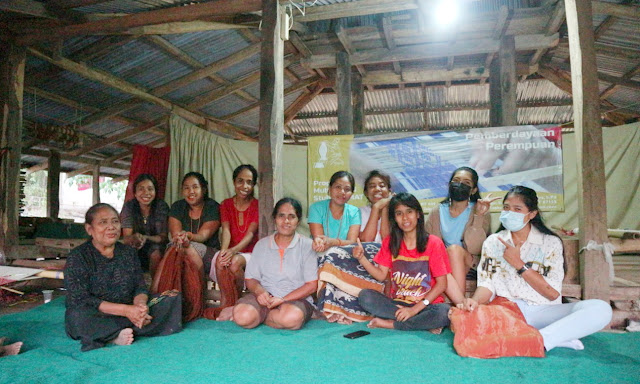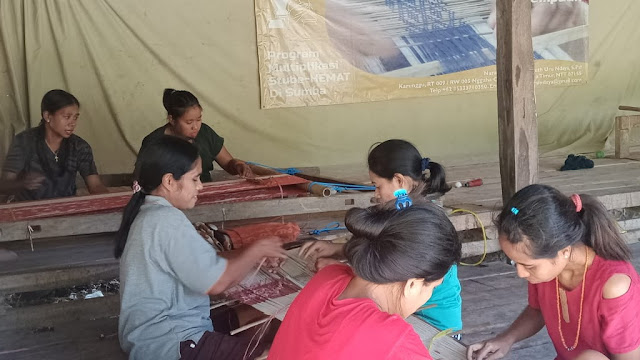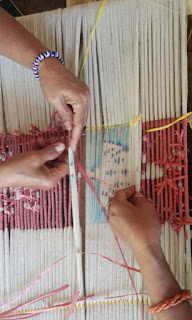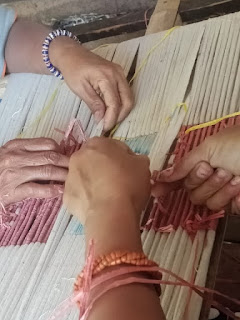The tied weaving has a great influence on the culture of the people of East Sumba. This can be seen from the many needs and requirements for tied weaving in various traditional ceremonies. As in the wedding ceremony, the tied weaving is used as a wedding dowry, where the groom will bring a sarong or ‘Lau’ in the customary process of proposing, while the bride will reply with ‘hinggi’ (cloth) as a sign that the groom has been accepted. In traditional ceremonies of death, the tied weaving is used to wrap the corpse. The clothes come from the relatives of the deceased, where each will bring a piece of cloth to wrap the corpse. In addition, the tied weaving is used as traditional clothing for the people of East Sumba.
In its development, the tied weaving is increasingly known to the world and this can be seen from the number of tourists who come and buy woven cloth as souvenirs. Seeing the opportunity for the tied weaving that can help the family's economy while preserving local culture in East Sumba as well, the Stube HEMAT weaving group continuously builds a spirit of togetherness in the manufacture of woven fabrics. Currently, the group members are working on 40 sheets of shawl, and 20 pieces of cloth. Wednesdays and Fridays are their regular schedule for the group activities.
On Friday, May 28, and Wednesday, June 2, 2021, the participants reached the stage of tying the thread using a plastic rope. The motifs on the scarf are turtle, crocodile, flower, and star motifs. While tying the thread, they are also finishing the process of weaving the sarong.
On the same occasion, Mrs. Handayani, a doctor on duty in Kahaungu Eti district, came to visit the Stube HEMAT weaving group to observe the activity of the group directly. After seeing it, she gave encouragement and appreciation to the group participants, because in the beginning, she understood that only those whose descendants were weavers could inherit the weaving tradition. While in the Stube HEMAT weaving group, almost all of them are beginners, not from the weaver family. Furthermore, the Tanatuku village in Nggaha Ori Angu district is not a weaving area, but now everyone talks about a weaving group in Tanatuku
Dr. Handayani came not only to appreciate but also shared her experience in promoting woven cloth. Besides focusing on the profession as a doctor, she has a passion for weaving, and now she has her weaving boutique which she has managed and produced much income. During the discussion, she suggested that the woven cloth can be modified into masks, tablecloths, curtains, pillowcases, wall decoration, and so on, as well as create a weaving account to make it easier when promoting. She was ready to help, especially in ways to promote.
The group participants were very excited and enthusiastic about her presence. Not only discussing about weaving, the group also consulted their current health, such as pain in their back, chest, and so on. Marlin Tanggu Hana complained that her waist hurt, "Doctor, I felt pain in my waist, please give me medicine first so I can be more energetic to weave," she said while laughing. Dr. Handayani replied, “I'll come back later and be ready to check the health of you all and give medicine," she responded with a smile.
During the weaving process, some of the participants complained about back pain because they had to sit in the circle of the ‘loom’, and their waist was tightly tied with the loom. So that during the weaving process they had to sit up straight while tightening the ties. It is natural for them to complain of back pain because most of them are beginners in the weaving process. However, it did not reduce their enthusiasm to continue weaving the Sumbanese tied weaving cloth. ***




